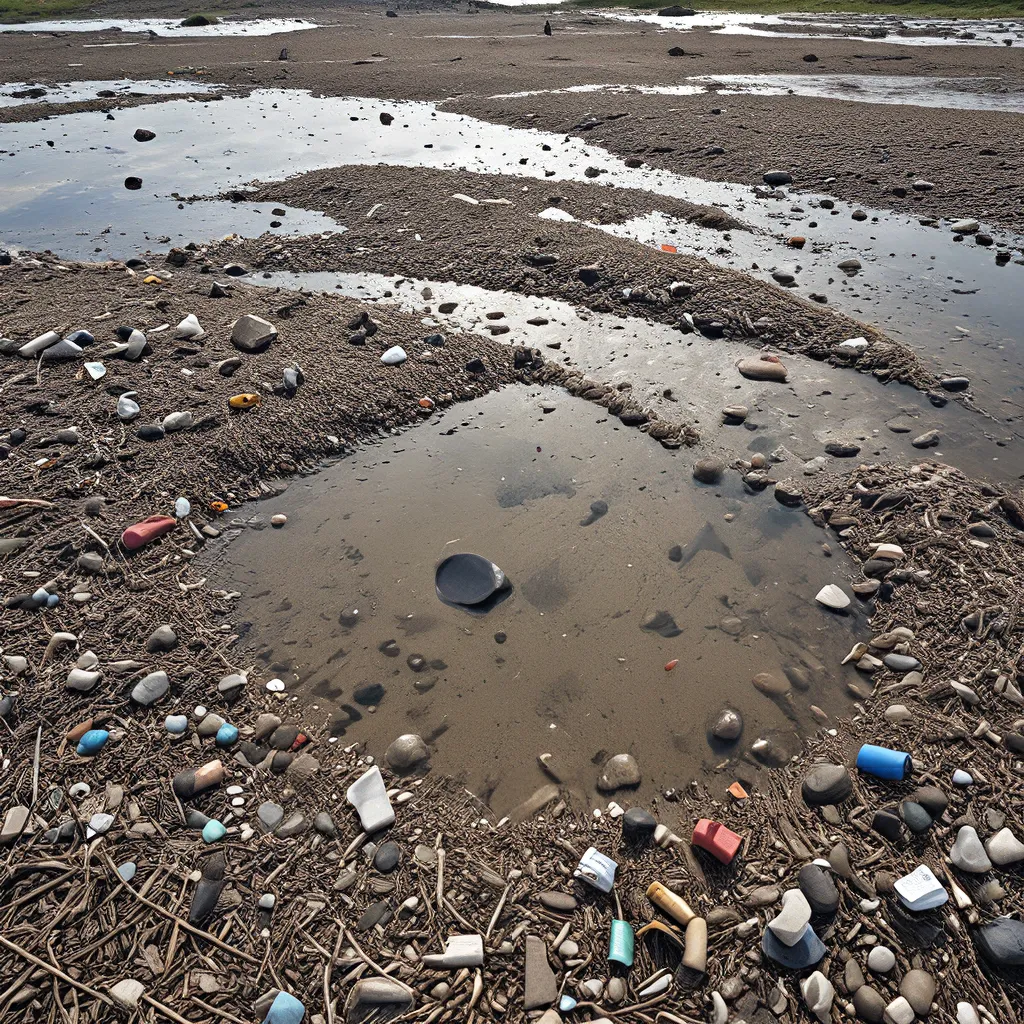
As an environmentally conscious citizen, I’ve always been fascinated by the intricate web of environmental challenges we face. And one issue that has been steadily climbing up the agenda is the alarming rise of microplastics in our wastewater systems. It’s a problem that seems to be lurking in the shadows, quietly infiltrating our waterways and ecosystems, with far-reaching consequences that we’re only beginning to understand.
The Microplastic Menace
Let’s start with the basics – what exactly are microplastics? These are tiny plastic particles, often invisible to the naked eye, that can come from a variety of sources. They might be tiny fibers shed from our clothes during washing, tiny fragments from the breakdown of larger plastic items, or even microbeads intentionally added to personal care products. And the kicker? These insidious little particles are finding their way into our wastewater systems in staggering quantities.
According to a recent study, researchers estimated that a single load of laundry can release up to 700,000 microplastic fibers into the wastewater. That’s a mind-boggling number, and it’s just the tip of the iceberg. When you consider the billions of loads of laundry done worldwide every day, the scale of the problem becomes truly overwhelming.
The Wastewater Challenge
Now, you might be thinking, “Surely our wastewater treatment plants can handle this, right?” Well, I’m afraid the reality is a bit more complex. While these facilities are designed to remove a wide range of contaminants, microplastics pose a unique challenge. Their tiny size and tendency to slip through even the most advanced filtration systems means that a significant portion of these insidious particles are making their way back into our waterways.
In fact, a recent study found that wastewater treatment plants can remove up to 90% of microplastics, but the remaining 10% still end up being discharged into the environment. And when you consider the sheer volume of wastewater being processed every day, that 10% becomes a staggeringly large amount.
The Downstream Impact
The consequences of this microplastic pollution are far-reaching and deeply concerning. These tiny particles can be ingested by aquatic life, from tiny plankton to large fish, and they can ultimately make their way up the food chain and into the very seafood we consume. And the impacts don’t stop there – microplastics have been found in drinking water supplies, soil, and even the air we breathe.
But the story doesn’t end with the direct environmental impact. Microplastics can also act as carriers for a wide range of hazardous chemicals and pathogens, further compounding the problem. These contaminants can then be released into the environment, potentially causing harm to both wildlife and human health.
The Circular Economy Solution
So, what can we do to tackle this growing threat? Well, one promising approach is to embrace the principles of the circular economy. This holistic approach aims to keep resources in use for as long as possible, extracting maximum value before safely returning them to the environment.
In the context of microplastics and wastewater, this might involve developing more effective filtration and treatment technologies that can capture these tiny particles before they’re discharged into the environment. It could also mean rethinking the way we design and manufacture products, using materials that are more easily recycled or biodegradable.
And let’s not forget the role of individual consumers. By making simple lifestyle changes, like choosing clothing made from natural fibers or avoiding products with microbeads, we can all play a part in reducing the flow of microplastics into our waterways. Alpha Wastewater, for example, offers advanced wastewater treatment services that can help mitigate the impact of microplastics and other contaminants.
A Future Without Microplastics?
The challenge of microplastics in wastewater may seem daunting, but I’m hopeful that with continued research, innovation, and collective action, we can turn the tide on this emerging environmental threat. After all, 7979 people have already accessed information on this topic, demonstrating a growing awareness and concern.
As we move forward, it’s important to keep an open mind and be willing to adapt as our understanding of this issue evolves. There’s still a lot we don’t know, and new discoveries and insights are likely to emerge in the years ahead. But one thing is certain – by working together, we can make a real difference in protecting our precious waterways and safeguarding the health of our planet for generations to come.
So, let’s roll up our sleeves and get to work. The future may be uncertain, but with perseverance, creativity, and a commitment to sustainability, I believe we can create a world where microplastics are a thing of the past. Who’s with me?